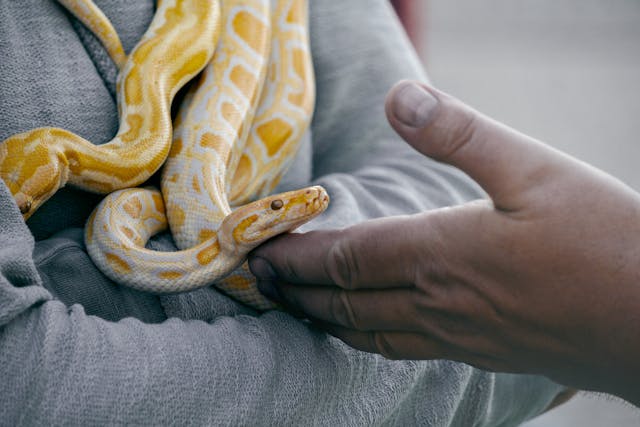Would it surprise you to know that there are about 2,500 individual species of snake? Granted, not all are appropriate to keep as pets. However, there are certainly some that make fantastic family members. If you’re considering making one of these unique creatures a family pet, there are a few things you ought to know.
The breeds of snakes that are commonly kept in households can have quite different, distinct needs. Since they originate in different parts of the planet, they will be accustomed to temperatures and humidity levels that are found in these habitats. Read on to learn what to expect from your scaling sibilant friend.
Snakes need secure enclosures
The best housing is a good-sized escape-proof aquarium with a lid that can be latched shut. Depending on the snake species you have, you’ll need either a short and wide terrestrial-style cage or a tall slender arboreal-style one that allows climbing.
Your new pet needs enough room to move around a little and adequate bedding materials made of artificial turf, aspen chips, carpet, or paper. When it comes to daily caretaking, your snake’s habitat should be kept clean. Since these pets don’t defecate that often, maintaining their dwelling is not difficult.
Snakes have specific heat and humidity needs
Their home should have the right amount of moisture and heat that will enable them to comfortably shed their skin. In general, most snakes need temperatures of 80-85 degrees Fahrenheit in the daytime and no cooler than 75 degrees overnight. There also needs to be an area of their cage where your snake can enjoy a warmer 90 degrees.
To achieve the right balance, use heat lamps or heaters made for aquariums and put a thermometer in the cage to monitor the temperature. Heating equipment is necessary to assist snakes to regulate the temperature of their bodies; being cold blooded or ectothermic, they can’t do it on their own.
In terms of humidity, breeds differ in how much they must have for optimal health. Snakes that need a more humid habitat should have their enclosure misted regularly. Take note that while all snakes enjoy a good soak now and then, some species need to bathe more often than others. A large bowl of water that your pet can fully submerge in is a perfect addition to its cage.
Feeding your snake can be kind of gross, but amazing
As you may already be aware, a snake’s diet usually consists of rodents that it eats whole. If you’re not squeamish, the process can be quite fascinating to watch. Certain types of snakes have a different diet. For instance, while some subsist on birds, chicks, mice and rats, others will accept eggs, fish, insects, and slugs. Expect to save a spot in your freezer for snake food and be sure to defrost the meal fully before giving it to your pet.
Choose a healthy snake from a low-maintenance breed
To select your new pet, start by researching the various snake species. Focus on their typical longevity and specific health needs so that you understand what you may be in for. Some species make better pets than others. For example, corn snakes, green snakes, and king snakes are easy for beginner owners. These breeds are small enough to keep indoors and are quite easy to handle.
Examine the snake’s appearance before making your selection. It shouldn’t be boney or skinny or seem lethargic. Its skin should be smooth and tight and its eyes bright and alert, not sunken or cloudy. When a snake is about to shed, its eyes become cloudy, and it stops eating. You don’t want to adopt your pet while they’re in this stressful state.
Snakes are unique, quiet companions
The nice thing about snakes as pets is that they provide good company without requiring as much work as some other types of pets. While cats and dogs may be more typical family pets, these animals need considerably more care. Plus, they can be quite demanding of your energy and attention.
In contrast, snakes don’t ask for much. If they have their basic needs met, they will be quite content to quietly spend time with you. These quiet animals are the perfect companions for anyone who wants a low-maintenance pet that helps relieve stress.
Finally
Just like any pet, your snake should see the vet for regular checkups. It’s a good idea to book an appointment as soon as you acquire your new companion. They can verify that your creature companion is healthy and that you learn about how to care for it.

